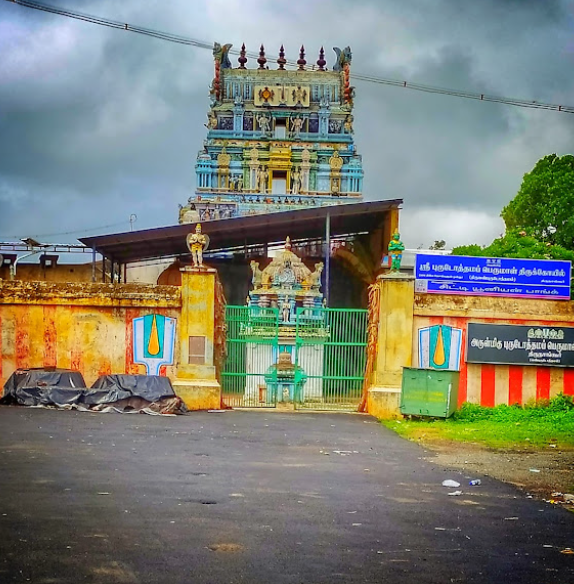The history of the Purushothama Perumal Temple is rooted in a remarkable legend. Similar to the story of Mother Parvathi feeding the Saivite child saint Tirugnana Sambandar with wisdom milk, this temple has its own divine tale. According to tradition, Lord Perumal, known as Sirkali Van Purushothaman, performed a miracle to feed a hungry child. Sage Vyaghrapada brought his child, Upamanyu, to the temple and placed him at the entrance while he went to gather flowers for the Lord. As the child cried out for food, the Lord, reclining in the milk ocean, heard his cries. In response, Lord Perumal manifested a milk ocean at the temple, and Mother Purushottama Nayaki nourished the child with the milk from this divine ocean. Devotees revere Lord Perumal as a form of Lord Sri Rama.
Sthala Puranam:
The name ThiruVann Purushothaman derives from the significance of the deity of this temple, who bestowed the Thirupaarkadal (the Milk Ocean) and is revered as Purushothaman, embodying the greatest qualities of humanity, alongside his consort Purushothama Naayaki (Periya Piratti).
In recognition of Lord Narayana's generous gift of the Thirupaarkadal to the sage Upamanyu, the sacred water here is known as Thirupaarkadal Theertham.
The temple's vimana is named Sanjeevi Vigraha Vimaanam to commemorate the Sanjeevi Mooligai (herb) that saved Lord Rama, symbolising the divine connection.
The term Purushothamam signifies the supreme being among devotees (Bhaktas), those who have attained liberation (Muktas), the righteous (Nitheyas), and humanity (Purushas), representing the eternal soul in communion with the divine.
The Utsavar Purushothaman at this temple is renowned for his extraordinary beauty, captivating the hearts and minds of all who behold him.
Prominence of the Shrine:
The Purushothama Perumal Temple ranks 30th among the 108 Divya Desas dedicated to Vishnu. In this temple, Lord Purushothaman is depicted in a standing posture facing east, while Mother Purushothama Nayaki blesses devotees from her shrine on the southwest side of the temple in a seated position. The inner prakara houses shrines for Sri Andal, Lord Rama with Mother Sita and Sri Lakshmana, Sri Anjaneya, Nammazhwar, Udayavar Sri Ramanuja, and Senai Mudaliar. Notably, the temple features three shrines dedicated to Anjaneyar. In the Sri Rama shrine, Anjaneyar is portrayed in a worshipping pose with folded hands and a closed mouth. This temple is also known as Van Purudothamam or Van Purushothama.
